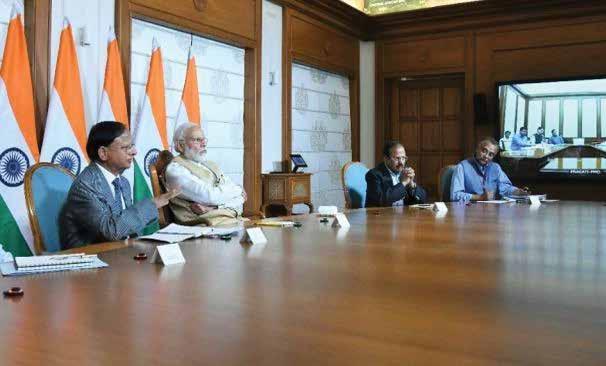Article | Misinformation
The Digital Pandemic The spread of misinformation in varied forms has always been a problematic situation in political and non-political scenarios for a long time, affecting businesses and societies. The spread of fake news is not a modern problem but the social media age has added to the problem given that the spread of misinformation often takes just a few seconds and quickly affects the mindset of society Prateek Singh Digital Marketing Associate
F
ake news spread on social media these days has a huge impact on the opinions of people around the world. One case of fake news spread which shook the world in recent times was the 2016 US Presidential election, where it was believed that millions of twitter and Facebook users were politically influenced to support certain agendas under the influence of tweets and Facebook posts they read. According to some news agencies, Cambridge Analytica, a political consulting firm illegally used the data of 87 million users’ Facebook profiles to influence voters in the states. Some claim that the news spread on social media was not that influential as compared to what the average American user digests via news channels. But this brings into limelight the influence of social media on a regular person’s life and how easy it is to influence a group of people by spreading misinformation. Over the
36 April 2020 | www.urbanupdate.in
years, social media has emerged as a platform where anyone from any place can post absolutely anything at any given point in time. It primarily works on the number of clicks that works as a catalyst in spreading personalized ads that can manipulate and shape public discourse. This model allows a platform to launder one’s propaganda in a very subtle way which the audience hardly realises. The leverage over the audience has enabled false information to spread much more rapidly than accurate information.
The Indian scenario
With the growing number of smartphone users in India as the cost of mobile phones is decreasing day by day, the number of people to whom the falsified information can be spread has grown exponentially. According to the reports released in July 2019, India has around 400 million WhatsApp users and Facebook the parent company of WhatsApp has around 241 million active users, which makes India the biggest market for digital promoters to sell information. This also means that India has potentially a large group of people to be influenced by the false information in distressing times like
COVID-19. In India, around 84 per cent of Whats Appusers fall in the age group of 18-35, and the people who digest news from messaging platforms are now being called the students of ‘WhatsApp University’. Everyday hundreds of fake news messages, images and videos are shared on this platform with people believing it to be true, spreading it both digitally and verbally. In these difficult times when everyone is concerned about their health and the medical researchers are working hard to find a cure for containing the novel coronavirus,the WhatsApp University has already taught people how to get cured, with fake news disguised as ‘Medical Advice’ clamming that taking home remedies such as in digesting hot lemon water will increase the Vitamin C in the body will destroy the virus. A medical claim on WhatsApp claiming that drinking Gaumutra or Cow Urine is a cure for virus was so widely spread in the country that a few political parties organised events where hundreds of people gathered to drink cow urine as suggested by WhatsApp University to protect themselves from the pandemic. Another such fake news which has had a devastating effect on Industry and Indian economy was claiming that eating chicken can cause coronavirus. This news had a major effect on the life of many poultry farmers and businesses run around the industry. The falsified information spread through social media led to a staggering loss to the industry with the price falling from `180 per kg to `60-70 per kg in days and around an estimated loss of `1.6 billion per day according to All India Poultry Breeders’ Association. Not only this news affected the poultry farmers who due to the spread of misinformation were forced to sell their chicken at low prices or in giving them free, but lots of chickens old and newly born were also horrifically killed. This loss of poultry industry also affected the maize and soya industry of India as the major consumer of these industries were the poultry farmers. Not only WhatsApp but the video









